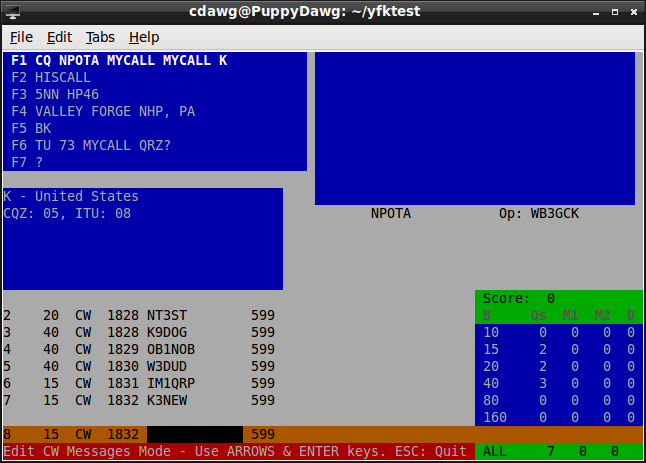My (overly) fastidious approach to logging my ham radio contacts has been well-documented. Since I upload all of my contacts to the Logbook of the World (LoTW), I like to reflect my locations accurately in the TQSL software. When you do most of your operating while portable, that can add up to a lot of locations to deal with. I’ll show you my approach to dealing with locations in TQSL.
How It Started
As best I can recall, I started using LoTW about six or seven years ago. I started creating new locations in TQSL for every place I operated away from home. So, there were lots of campgrounds that my (far) better half and I frequented, along with an assortment of parks and other places my radio has been to. Then, along came National Parks on the Air, followed by Parks on the Air. Before I knew it, I was scrolling through a long list of locations to find the one I wanted for an upload to LoTW.
One approach to paring down the list, I suppose, would be to go in and delete the one-off locations I’m not likely to visit again. That, however, conflicts with my inherent packrat nature. (That also explains the boxes of assorted leftover screws I have in the basement.)
One thing I noticed is that many locations in my list shared the same attributes, e.g.: state, county, grid square, etc. For example, all the parks in northern Delaware I activated recently are all in the same county and grid square. (Fun fact: Delaware only has three counties.) Based on this observation, I came up with an approach to tame my locations list and make it easier to scan the list to find a particular location.
My Location Naming Convention
I ended up deleting most of my locations is TQSL and created some new ones using the following naming convention:
STATE_COUNTY_GRID
The STATE is just the standard two-character abbreviation. The GRID is the four-character grid square. Here are some examples from my locations list:
DE_NewCastle_FM29
MD_Cecil_FM29
PA_Chester_FN20
PA_Chester_FM29
PA_Delaware_FM29
TQSL automatically stores the locations alphabetically, so it’s easy to scroll through the list to find the location I’m looking for. I kept one or two of specifically named locations for frequently used places like “Home.”

While this works for my situation here in the States, operations in other countries would likely need some tailoring. I’ll cross that bridge when I get to it. Also, if you have certificates for more than one callsign, you’ll need to account for that.
Where Am I, Anyway?
To use this approach, I need to know what county and grid square I’m in. There are a couple of resources I use to do that. Before I get on the air from a portable location, I use these resources on my Android phone:
- What County am I In. When I access this website from my cell phone, it shows the county I’m in, along with the zip code, address, and coordinates.
- Easy QTH Locator. When you launch this app, it uses your phone’s location services to show your grid square, along with your coordinates and elevation.
Once I have determined the county and grid square I’m in, I jot this information down in my notebook or take screenshots from the apps on my phone.
These are the resources I use, but a web search will yield lots of similar tools you can use. I should also note that I have no financial interest in these apps.
Wrapping Up
This could very well be another case of over-thinking on my part. Regardless, I’ve been using this approach for a while now, and it has been working out for me. I’d be interested in hearing your method of managing portable locations for LoTW.
Oh, and before I forget… Remember to make regular backups of your TQSL locations, certificates, and preferences. Someday you’ll be glad you did.
73, Craig WB3GCK










